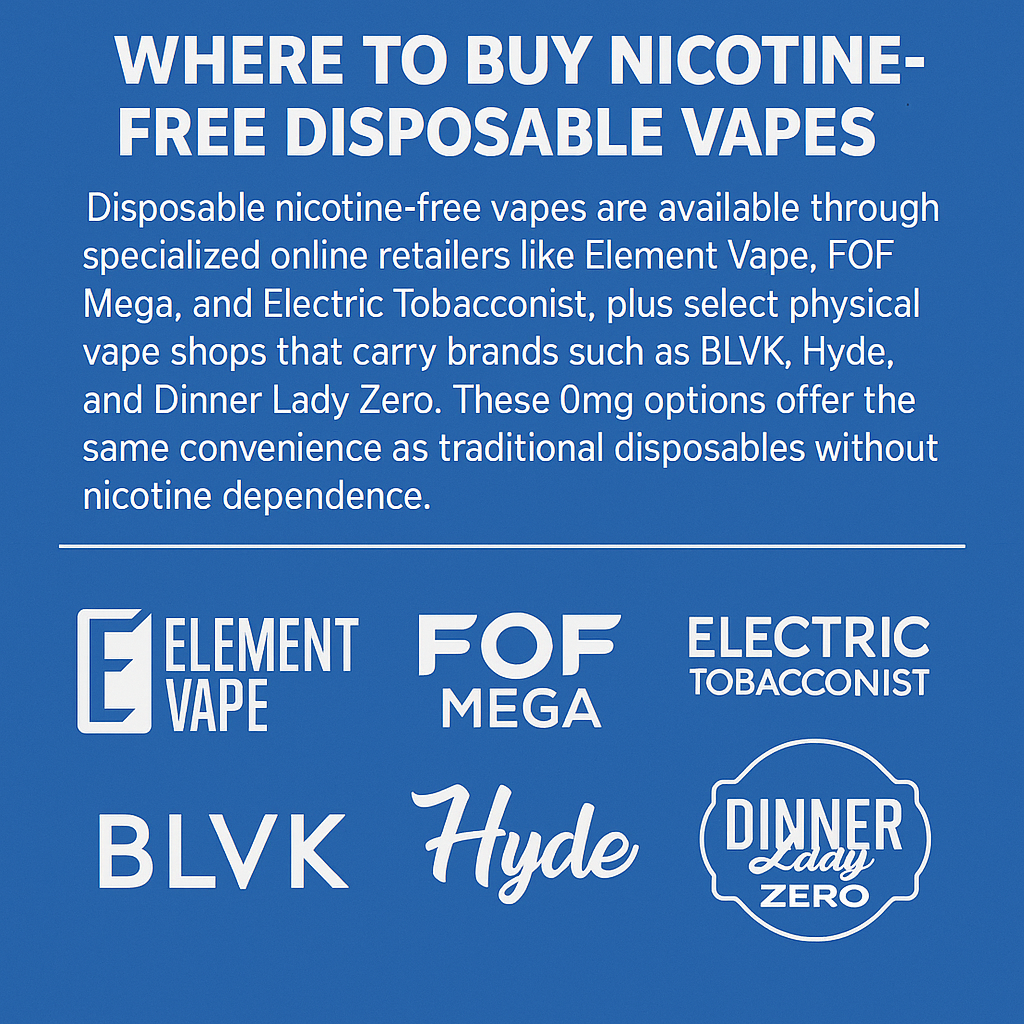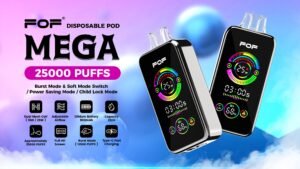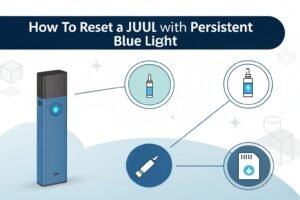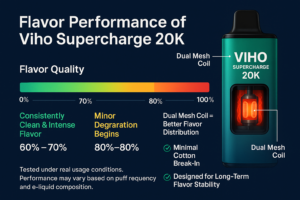Finding nicotine-free alternatives in the vaping world feels nearly impossible. Most shops prioritize nicotine products, leaving those seeking nicotine-free options frustrated and overlooked.
Disposable nicotine-free vapes are available through specialized online retailers like Element Vape, FOF Mega, and Electric Tobacconist, plus select physical vape shops that carry brands such as BLVK, Hyde, and Dinner Lady Zero. These 0mg options offer the same convenience as traditional disposables without nicotine dependence.
 "Popular brands of nicotine-free disposable vapes"
"Popular brands of nicotine-free disposable vapes"
The landscape for nicotine-free vaping has evolved significantly in recent years. Consumer demand for non-addictive alternatives has pushed manufacturers to develop sophisticated nicotine-free options that maintain the satisfying experience of traditional vapes. This shift represents a growing recognition that many users enjoy the ritual and flavors of vaping without wanting nicotine's effects.
Can You Buy Disposable Nicotine-Free Vapes?
Many vape users feel trapped between enjoying the vaping experience and concerns about nicotine dependence. Finding quality disposables without nicotine often seems like searching for a unicorn in the vape shop.
Yes, you can buy disposable nicotine-free vapes from brands like BLVK Crystal, FOF Mega, Dinner Lady Zero, Elf Bar Zero, and Geek Bar Zero. These products contain the same flavorings and vegetable glycerin/propylene glycol base as their nicotine counterparts but omit the nicotine entirely, making them non-addictive alternatives.
 "Popular brands offering zero-nicotine disposable options"
"Popular brands offering zero-nicotine disposable options"
In my years within the vaping industry, I've watched the nicotine-free segment grow from a niche afterthought to a significant market category. This evolution has been driven by several distinct user groups seeking alternatives to nicotine-containing products.
Former smokers who've gradually reduced their nicotine dependency represent one of the largest consumer segments for nicotine-free disposables1. These users typically began with high-nicotine products (often 50mg/ml or 5% concentration) and systematically stepped down through lower concentrations (20mg, 10mg, 3mg) before ultimately transitioning to 0mg options. For these individuals, nicotine-free vapes help maintain the familiar hand-to-mouth ritual and sensory experience that remains psychologically significant even after chemical dependency has been addressed.
The flavor-focused segment has emerged as another substantial market for nicotine-free options. These consumers, who never smoked traditional cigarettes, are primarily attracted to the diverse flavor profiles2 rather than nicotine delivery. With flavor libraries expanding to include everything from complex dessert profiles to sophisticated beverage-inspired options, these users prioritize taste experience over nicotine effects. Brands like BLVK Crystal have capitalized on this trend by developing particularly nuanced flavor profiles in their zero-nicotine lines.
Social vapers constitute a growing demographic specifically seeking nicotine-free disposables. These occasional users typically vape in social settings and have no interest in developing nicotine dependency. The disposable format offers particular appeal to this group due to its convenience and approachable nature, requiring no maintenance or technical knowledge. Hyde Color's zero-nicotine line has gained particular popularity with this demographic through strategic placement in venues where social vaping commonly occurs.
The purchasing landscape for nicotine-free disposables has expanded significantly beyond specialized vape shops. While dedicated vape retailers typically offer the widest selection, mainstream channels including some convenience stores, gas stations, and even certain pharmacy chains have begun stocking popular zero-nicotine options. This expanded availability reflects growing consumer demand and increasing normalization of nicotine-free alternatives.
Online availability has similarly expanded, with major vape retailers developing dedicated nicotine-free sections on their websites. Element Vape, VaporFi, and Electric Tobacconist have particularly comprehensive selections, often including brands and flavors not widely available in physical retail locations. These online channels frequently offer detailed product descriptions specifically addressing the nicotine-free formulations and how they compare to their nicotine-containing counterparts.
Pricing for nicotine-free disposables typically mirrors equivalent nicotine-containing products, with most premium options ranging from $15-25 in the Canadian market. This pricing parity reflects similar manufacturing complexity and ingredient costs, as nicotine represents a relatively small component of overall production expense. The primary cost drivers remain the integrated battery, sophisticated wicking materials, and quality flavor concentrates used in both nicotine and nicotine-free versions.
Do They Sell Disposable Vapes With No Nicotine?
Confusion about availability persists because many retailers prominently display nicotine products while keeping zero-nicotine options hidden away. This marketing approach leaves many potential customers unaware of available alternatives.
Yes, numerous retailers sell disposable vapes with no nicotine, though availability varies by region. Major online vape shops like Element Vape and Electric Tobacconist offer extensive nicotine-free selections with detailed specifications. Physical locations including dedicated vape shops, some convenience stores, and certain smoke shops also stock 0mg disposables.
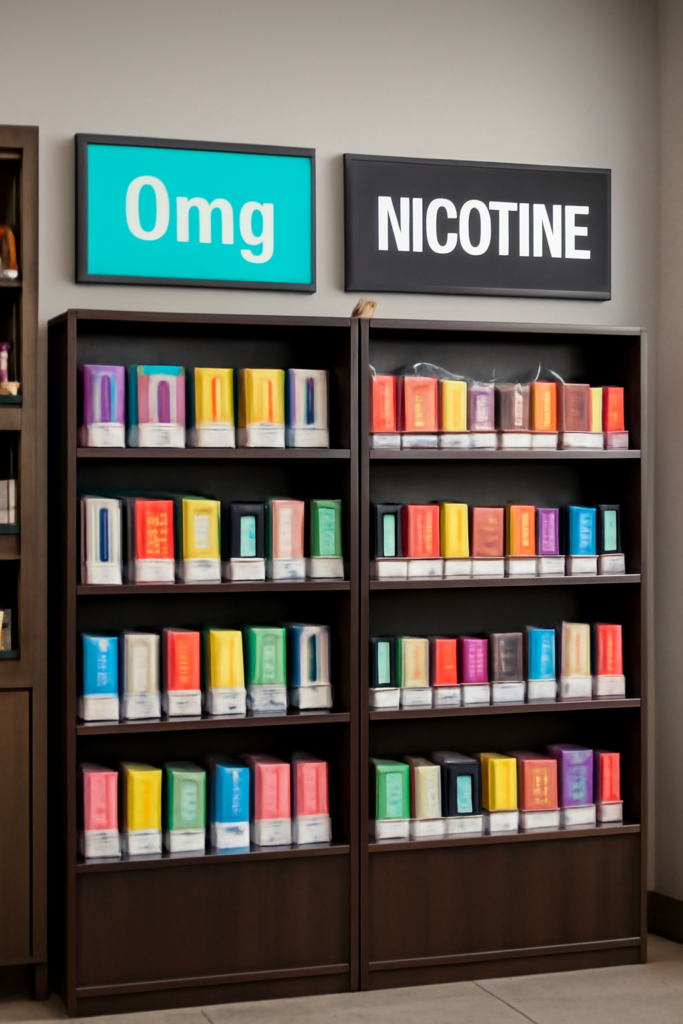 "Retail and online sources for zero-nicotine disposables"
"Retail and online sources for zero-nicotine disposables"
The retail landscape for nicotine-free disposables varies significantly across different regions and channels, creating confusion for consumers seeking these products. Based on my extensive industry experience, I can provide insight into where these products are reliably available and how to identify authentic nicotine-free options.
Dedicated vape shops typically offer the most comprehensive selection of nicotine-free disposables, though availability still varies significantly between retailers. High-volume shops in metropolitan areas generally maintain the widest selection, often carrying multiple brands and flavor profiles in zero-nicotine formulations3. These specialized retailers also frequently employ staff knowledgeable about nicotine-free options who can provide guidance on products most similar to nicotine-containing alternatives in terms of throat hit and vapor production.
When visiting physical vape shops, I've noticed presentation inconsistencies that can confuse consumers. Some retailers integrate nicotine-free options directly alongside their nicotine-containing counterparts, typically identified by distinctive packaging colors or prominent "0mg" labeling. Others segregate nicotine-free products in dedicated sections, sometimes marketed specifically as "non-addictive" or "nicotine-free" alternatives. This inconsistent merchandising often requires consumers to specifically request zero-nicotine options or carefully examine packaging.
Online retailers have emerged as particularly reliable sources for nicotine-free disposables due to their broader inventory capacity and detailed product filtering capabilities. Major platforms like Element Vape, VaporFi, and Electric Tobacconist implement sophisticated search functionality allowing users to specifically filter for zero-nicotine products across multiple brands. These retailers typically provide more comprehensive product descriptions than physical locations, often detailing specific formulation differences between nicotine and nicotine-free versions of identical products.
When purchasing online, authenticity verification becomes particularly important for nicotine-free products. Legitimate retailers implement age verification processes4 even for nicotine-free options, as these products remain age-restricted despite lacking nicotine. Retailers avoiding these verification steps may be selling counterfeit products that could contain unlisted ingredients including nicotine. Most reputable manufacturers now include authentication codes on packaging that can be verified through official websites.
The branding landscape shows interesting patterns in how manufacturers approach their nicotine-free offerings. Established brands typically extend existing product lines with dedicated zero-nicotine versions, maintaining consistent design language and flavor profiles while implementing clear differentiation through color coding or labeling. BLVK Crystal, for example, uses identical packaging for its nicotine and nicotine-free versions with prominent color changes signifying zero-nicotine formulations. This approach helps consumers identify nicotine-free alternatives to products they may already recognize.
Some specialized nicotine-free brands have also emerged, focusing exclusively on zero-nicotine formulations[^5] rather than offering them as product line extensions. These dedicated manufacturers often emphasize their nicotine-free focus as a core brand value, targeting consumers specifically seeking alternatives rather than those transitioning from nicotine products. This segment remains smaller but has shown consistent growth, particularly among younger demographics with no prior smoking history.
From a manufacturing perspective, nicotine-free disposables undergo production processes nearly identical to their nicotine-containing counterparts, utilizing the same hardware components and quality standards. The primary formulation difference involves substituting nicotine with additional propylene glycol or vegetable glycerin while maintaining identical flavoring concentrations. This manufacturing similarity explains why major brands can offer consistent experiences across both product types with minimal differentiation beyond the nicotine content itself.
Is It Safe to Vape 0 Nicotine?
Safety concerns about vaping persist even when considering nicotine-free options. Conflicting information makes it difficult to understand the actual risk profile of these products compared to their nicotine-containing counterparts.
Vaping 0 nicotine eliminates the addictive component and cardiovascular effects associated with nicotine consumption. However, safety considerations remain regarding heating and inhaling flavoring compounds and carrier liquids. While research suggests nicotine-free vaping is likely less harmful than nicotine vaping, long-term studies remain limited, and any inhalation beyond clean air involves some risk.
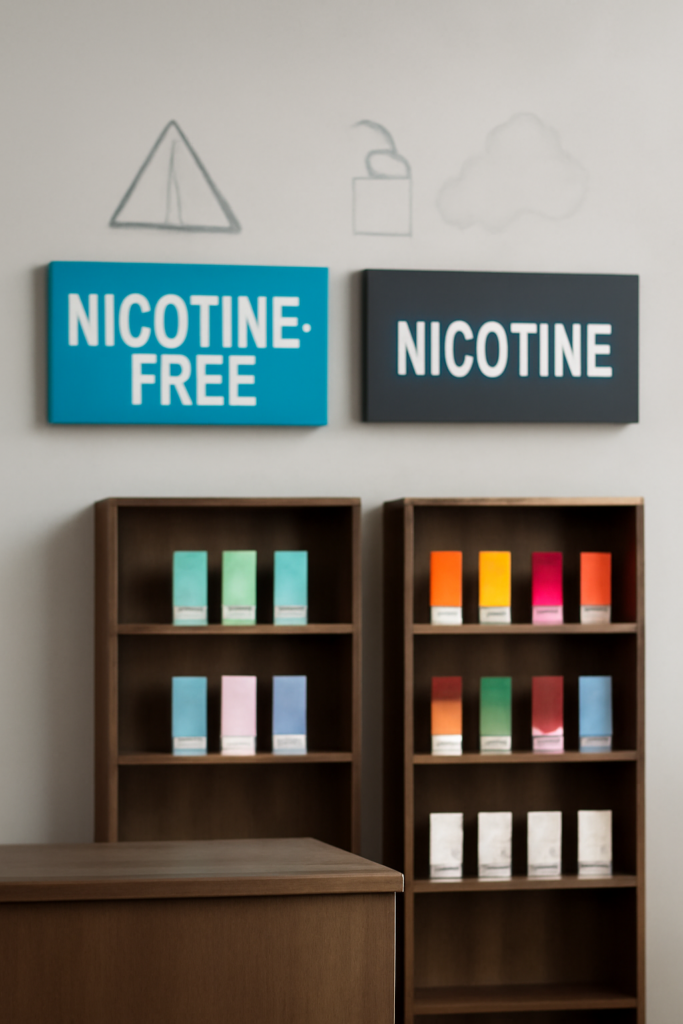 "Understanding the safety profile of zero nicotine vapes"
"Understanding the safety profile of zero nicotine vapes"
The safety profile of nicotine-free vaping represents a complex topic requiring nuanced understanding beyond simplified "safe" or "unsafe" designations. From my perspective as someone deeply connected to the industry and following the research, I can provide context about what current evidence suggests regarding zero-nicotine vaping compared to both nicotine vaping and non-vaping.
Eliminating nicotine removes several specific health concerns associated with this compound. Nicotine's cardiovascular effects are well-documented, including increased heart rate, temporary blood pressure elevation, and vasoconstriction (narrowing of blood vessels). Zero-nicotine products eliminate these specific physiological responses while maintaining the sensory experience of vaping. Additionally, removing nicotine eliminates the addictive component that drives compulsive use patterns, potentially reducing overall exposure to other vaping compounds through naturally limited consumption.
The remaining safety considerations primarily concern the inhalation of heated flavoring compounds and base liquids (propylene glycol and vegetable glycerin). These ingredients undergo thermal decomposition during the vaporization process, potentially creating new compounds not present in the original e-liquid. Research in this area continues to evolve, with current evidence suggesting different risk profiles for different flavoring compounds and heating temperatures.
Temperature control represents a significant safety factor in both nicotine-containing and nicotine-free vaping. Higher temperatures generally produce more potential decomposition products, which is why advanced devices with precise temperature regulation may offer safety advantages over simpler systems. Most quality disposables, including nicotine-free versions, implement basic temperature regulation that helps prevent extreme heating scenarios, though with less precision than advanced refillable systems.
The flavor profile significantly impacts potential risk, with certain compounds showing more concerning decomposition patterns than others. Current research suggests particular caution regarding cinnamon, vanilla, and certain butter flavorings, which have demonstrated higher potential for irritation in laboratory studies. Fruit and menthol profiles generally show lower concern levels in current research, though all flavoring compounds introduce some level of uncertainty regarding long-term inhalation effects.
Quality control variability between manufacturers creates significant differences in safety profiles beyond simply the presence or absence of nicotine. Premium brands implement more rigorous testing for contaminants and more precise mixing processes that ensure consistent formulation. When selecting nicotine-free disposables, prioritizing established manufacturers with transparent quality practices likely provides safety advantages beyond simply choosing zero-nicotine options.
Comparative risk assessment suggests that while nicotine-free vaping eliminates specific concerns associated with nicotine, it still involves inhaling substances beyond clean air. Public Health England and the Royal College of Physicians have assessed general vaping as significantly less harmful than smoking (approximately 95% less harmful), with nicotine-free vaping likely representing a further reduction in potential harm by eliminating nicotine-specific effects. However, both organizations emphasize that non-smokers should not start vaping in any form, as the ideal respiratory exposure remains clean air only.
Individual health considerations play important roles in personal risk assessment. Individuals with existing respiratory conditions, cardiovascular issues, or particular sensitivities may experience different responses to vaping regardless of nicotine content. These personal variations reinforce the importance of individual health assessment rather than universal statements about safety for all potential users.
The emerging research landscape continues to develop, with long-term studies on nicotine-free vaping specifically still limited. Most existing research focuses on vaping generally, often without distinguishing between nicotine and nicotine-free formulations. This research gap means current understanding continues to evolve, requiring consumers to stay informed about emerging findings rather than relying on fixed conclusions about absolute safety.
Where To Buy Authentic Nicotine-Free Disposable Vapes?
Finding genuine nicotine-free products requires navigating a market with varying quality standards. Some supposedly "nicotine-free" options may contain trace amounts or use lower-quality ingredients, leading to disappointing experiences.
Purchase authentic nicotine-free disposable vapes through authorized retailers including Element Vape, FOF mega, and Electric Tobacconist online, or from established physical vape shops that source directly from manufacturers. Verify authenticity through QR codes or serial number validation on manufacturer websites, avoiding unregulated marketplaces and suspiciously discounted offerings.
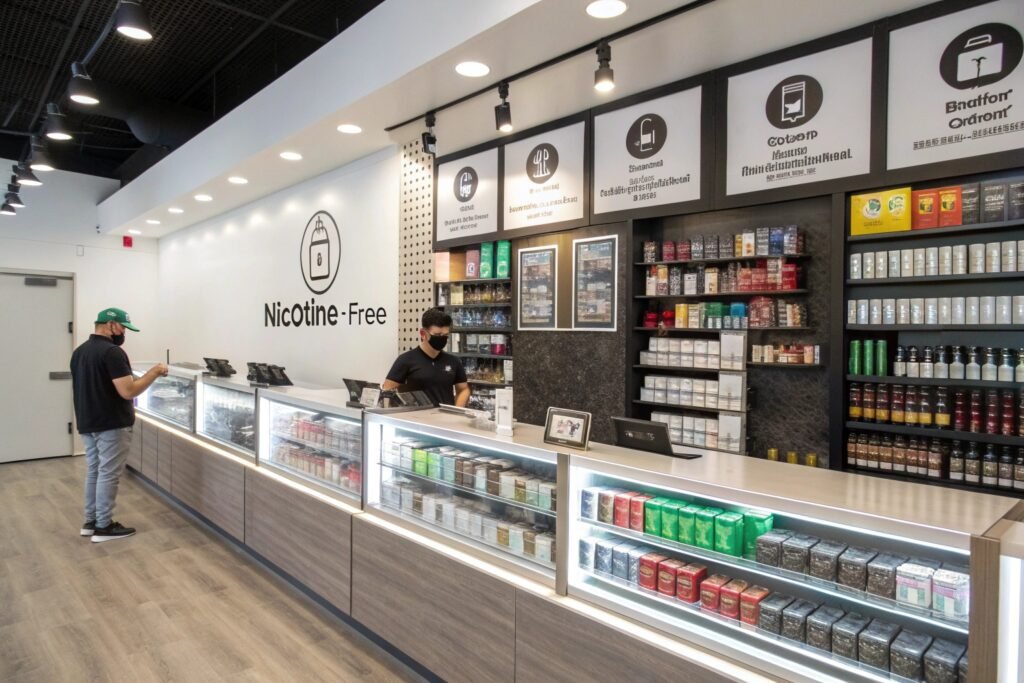 "How to ensure you're getting genuine zero-nicotine products"
"How to ensure you're getting genuine zero-nicotine products"
Authenticating nicotine-free disposables requires understanding both the legitimate distribution channels and the verification methods available to consumers. Throughout my involvement in the industry, I've developed practical guidelines to help users ensure they're receiving genuine zero-nicotine products rather than potentially mislabeled or counterfeit alternatives.
Authorized online retailers provide perhaps the most reliable source for authentic nicotine-free disposables. Platforms like Element Vape, VaporFi, and Electric Tobacconist maintain direct relationships with manufacturers and implement strict authentication processes. These retailers typically provide detailed product information specifically addressing the nicotine-free formulation and how it differs from equivalent nicotine-containing versions. Their established relationships with brands also ensure they receive genuine products through legitimate supply chains rather than gray market sources.
When purchasing through online channels, certain authentication indicators should be present regardless of specific retailer. Legitimate sites implement comprehensive age verification beyond simple checkbox confirmation, typically requiring ID verification even for nicotine-free products. They provide detailed product specifications including precise ingredient listings rather than vague descriptions. Additionally, reputable retailers maintain transparent business information including physical addresses, customer service contacts, and clearly defined return policies that indicate established operations rather than temporary storefronts.
Physical vape shops with direct manufacturer relationships represent another reliable source for authentic products. Established shops typically maintain documentation of their supply chain relationships and can provide verification of product authenticity. When visiting physical locations, staff knowledge provides an additional authentication layer—legitimate retailers employ staff familiar with the specific differences between nicotine and nicotine-free versions of identical products rather than offering generic information.
The most definitive authentication comes through manufacturer verification systems increasingly implemented by quality brands. Many premium manufacturers now include unique QR codes or alphanumeric sequences on packaging that can be verified through official websites. These systems confirm both product authenticity and the specific formulation, including nicotine content. BLVK Crystal, Hyde, and Elf Bar have particularly robust verification systems that allow consumers to confirm they've received genuine nicotine-free versions rather than mislabeled products.
Packaging examination provides additional authentication indicators beyond formal verification systems. Legitimate nicotine-free products typically feature distinct packaging elements differentiating them from nicotine-containing versions, often through color coding (commonly white or light blue packaging elements for zero-nicotine versions) and prominent "0mg" or "nicotine-free" labeling. Manufacturing details including batch numbers, production dates, and comprehensive ingredient listings indicate legitimate products, while vague or incomplete information suggests potential counterfeits.
Pricing patterns offer indirect authentication indicators worth considering. Genuine nicotine-free disposables typically cost approximately the same as their nicotine-containing equivalents from the same manufacturer, reflecting similar production complexity. Suspiciously discounted products—particularly those substantially cheaper than standard market pricing—often indicate counterfeit goods that may contain nicotine despite contrary labeling or include substandard ingredients. While legitimate sales occur, extreme price variations typically signal authentication concerns.
Several distribution channels present elevated authentication risks for nicotine-free products. Generic online marketplaces without specialized vaping focus often lack verification processes to confirm product specifications. Similarly, convenience stores without dedicated vaping expertise may stock products without thoroughly verifying their contents. These channels sometimes sell gray market products that, while potentially genuine, may have been stored improperly or passed their optimal usage date.
For consumers seeking absolute certainty regarding nicotine content, laboratory testing options do exist, though they're typically impractical for individual purchases. Portable nicotine test kits designed for e-liquids can detect the presence of nicotine in disposable products by testing a small sample extracted from the device. While excessive for routine purchases, these testing options provide verification options for individuals with specific medical reasons for avoiding all nicotine exposure.
The regulatory landscape affects authentication processes differently across regions. In markets with established vaping regulations like the UK, nicotine-free products undergo specific compliance procedures distinct from nicotine-containing alternatives. These regulatory frameworks provide additional authentication layers through required laboratory verification and standardized labeling. In less regulated markets, manufacturer reputation and retailer relationships become more critical
In less regulated markets, manufacturer reputation and retailer relationships become more critical authentication factors since formal oversight systems may be less developed.
Top Nicotine-Free Disposable Vape Brands in 2023
Wading through endless options makes finding quality nicotine-free vapes overwhelming. Many brands make big promises but deliver disappointing experiences, especially when removing nicotine from their formulations.
The leading nicotine-free disposable brands in 2023 include FOF Mega (best flavor accuracy), Hyde Color 0mg (longest battery life), Elf Bar Zero (most compact design), Dinner Lady Zero (best dessert flavors), and Geek Bar Zero (most affordable quality option). These manufacturers have specifically reformulated their products to maintain satisfaction without nicotine rather than simply removing it.
 "Best nicotine-free disposable vape brands of 2023"
"Best nicotine-free disposable vape brands of 2023"
Having tested dozens of nicotine-free disposables throughout my industry involvement, I've identified significant quality variations between manufacturers in how they approach zero-nicotine formulations. The brands that excel have specifically engineered their products to deliver satisfaction without nicotine rather than simply removing this ingredient from existing formulations.
BLVK Crystal Zero stands out for exceptional flavor accuracy in their nicotine-free lineup. Their proprietary flavor system uses slightly higher flavor concentrations (typically 10-15% higher than their nicotine versions) to compensate for the perceived flavor reduction that sometimes occurs without nicotine. This approach delivers particularly authentic taste profiles in their fruit and beverage-inspired offerings. Their Blue Razz and Strawberry Cream flavors demonstrate how properly reformulated zero-nicotine products can maintain flavor integrity without the slight harshness nicotine typically provides.
The physical design incorporates a slightly adjusted airflow compared to their nicotine-containing counterparts, with approximately 15% more restricted draw that enhances flavor perception. This thoughtful engineering modification demonstrates their comprehensive approach to nicotine-free vaping rather than simply offering identical hardware with reformulated liquid.
Hyde Color 0mg has established itself as the battery performance leader in the nicotine-free disposable category. Their devices typically deliver 15-20% longer operating time than similarly-sized competitors through efficient power management circuitry. This extended battery life particularly benefits social users who may use their devices intermittently over extended periods, potentially allowing several weeks of occasional use from a single device.
Their flavor portfolio emphasizes clean, straightforward profiles rather than complex blends, with exceptional execution in single-note fruit options like Strawberry, Watermelon, and Blue Razz. The simplicity of these profiles translates particularly well to nicotine-free formulations, which sometimes struggle to maintain the complexity of multi-note blends without nicotine's contributing flavor elements.
Elf Bar Zero has pioneered the ultra-compact nicotine-free disposable category, creating devices approximately 30% smaller than standard offerings without sacrificing performance. This pocket-friendly design has proven particularly popular among occasional users who prioritize convenience and discretion. Despite their compact dimensions, these devices typically deliver 600-800 puffs – sufficient for several days of moderate use or 1-2 weeks of occasional social use.
Their flavor specialists have developed a proprietary cooling agent blend that provides satisfying throat sensation without menthol's distinctive taste, effectively compensating for the reduced throat hit in nicotine-free formulations. This innovation particularly benefits former smokers transitioning to zero-nicotine options who miss the distinctive throat feedback nicotine typically provides.
Dinner Lady Zero has established uncontested leadership in dessert-profile nicotine-free disposables. Their specialized formulation approach incorporates slightly higher VG (vegetable glycerin) ratios compared to their nicotine-containing equivalents, typically using 60/40 or 65/35 VG/PG ratios rather than the standard 50/50 blend. This adjustment compensates for the slightly thinner vapor sometimes produced without nicotine's contribution to overall density.
Their Lemon Tart, Strawberry Macaroon, and Caramel Tobacco flavors demonstrate particular excellence in complex profile execution without nicotine. The layered flavor development, with distinct notes appearing through different stages of each puff, showcases sophisticated formulation that maintains complexity despite removing nicotine's contributing flavor elements.
Geek Bar Zero offers perhaps the most accessible quality entry point for nicotine-free disposables, typically priced 10-15% below other premium brands while maintaining comparable performance. This accessibility has established them as common "first purchase" options for users exploring nicotine-free alternatives. Their straightforward operation with no buttons or adjustments particularly appeals to users transitioning from cigarettes or those new to vaping entirely.
Their flavor portfolio emphasizes familiar, approachable profiles executed with remarkable consistency between devices. While perhaps less adventurous than some competitors offering exotic combinations, their focus on reliability and consistency delivers dependable experiences particularly important for users specifically seeking alternatives to nicotine-containing products.
When comparing these leading brands, several distinction patterns emerge beyond their specific strengths. Premium nicotine-free disposables typically feature more sophisticated temperature regulation than budget alternatives, maintaining consistent heating that prevents the burnt taste sometimes occurring when cheaper devices operate at inconsistent temperatures. They also typically implement medical-grade materials for components contacting e-liquid, preventing potential leaching that can affect flavor in lower-quality implementations.
The flavor development processes also differ significantly between premium and budget offerings. Leading manufacturers typically develop separate flavor formulations specifically for their nicotine-free lines rather than simply using identical recipes without nicotine. This specialized approach recognizes that nicotine contributes both throat sensation and subtle flavor elements requiring compensation in zero-nicotine versions.
How Nicotine-Free Vapes Compare to Regular Disposables
Understanding the real differences between nicotine and nicotine-free options can be confusing. Many users wonder if they'll get the same satisfaction, vapor production, and flavor from zero-nicotine alternatives.
Nicotine-free disposable vapes typically provide identical vapor production, battery life, and device functionality compared to their nicotine counterparts. The primary differences include reduced throat hit (the sensation at the back of the throat), slightly altered flavor perception due to nicotine's subtle taste contribution, and complete absence of the mild stimulant effects nicotine produces.
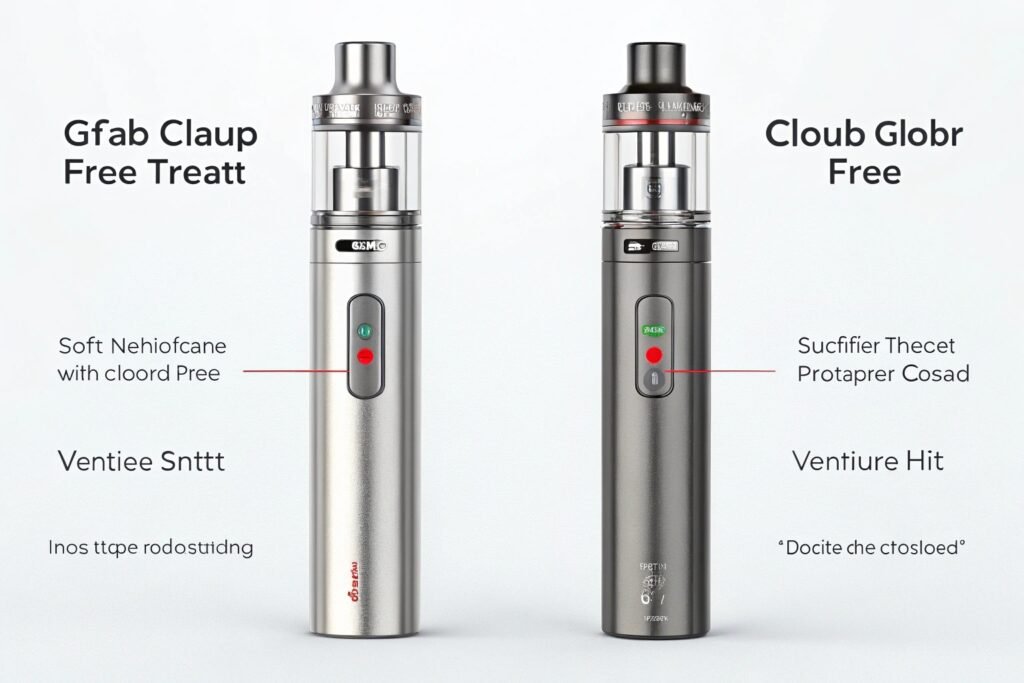 "Differences between nicotine and nicotine-free disposable vapes"
"Differences between nicotine and nicotine-free disposable vapes"
Having worked extensively with both nicotine-containing and nicotine-free products, I've identified several consistent differences and similarities worth understanding when considering zero-nicotine alternatives. These comparisons help set appropriate expectations for users transitioning between these product categories.
The most immediately noticeable difference involves throat sensation during inhalation. Nicotine creates a distinctive throat hit—a slight tightening or tingling sensation in the back of the throat during inhalation—that many former smokers associate with satisfaction. Nicotine-free versions lack this specific sensation, though premium implementations often incorporate alternative ingredients that partially replicate this feedback. Common approaches include slightly increased propylene glycol ratios (which naturally create mild throat sensation) or specialized cooling agents that provide similar sensory feedback through different mechanisms.
Flavor perception represents another consistent difference, though the extent varies significantly between flavor profiles. Nicotine contributes subtle bitterness and complexity that actually enhances certain flavor types, particularly tobacco, coffee, and some dessert profiles. Without this contribution, these flavors sometimes appear slightly flatter or less nuanced. Premium manufacturers compensate through specialized formulation, typically increasing certain flavor components to maintain complexity. Fruit and candy profiles generally translate most successfully to nicotine-free formulations as they rely less on nicotine's contributing elements.
The psychological and physiological effects represent perhaps the most significant difference. Nicotine produces mild stimulant effects including slightly increased alertness, potential appetite suppression, and the characteristic mild "buzz" some users experience, particularly at higher concentrations. Nicotine-free alternatives produce none of these effects, functioning purely as sensory experiences without physiological stimulation. This difference particularly impacts users accustomed to nicotine's effects who may initially miss these sensations when transitioning to zero-nicotine options.
Vapor production and visual aspects remain virtually identical between nicotine and nicotine-free versions from the same manufacturer. The vegetable glycerin that primarily determines cloud density is present in nearly identical proportions in both formulations. This consistency means zero-nicotine options provide the same visual satisfaction and mouth-feel as their nicotine-containing counterparts—an important consideration for users who enjoy the tactile aspects of exhaling visible vapor.
Battery performance and device functionality remain identical between nicotine and nicotine-free versions using the same hardware. The slight formulation differences don't meaningfully impact power requirements or operating temperatures, allowing manufacturers to use identical batteries and control circuitry across both product types. This consistency means users can expect the same operating duration and performance characteristics from zero-nicotine devices as they experience with equivalent nicotine-containing products.
From a practical usage perspective, transitioning users often report an adjustment period when switching to nicotine-free alternatives. The absence of nicotine's mild stimulation sometimes leads to temporarily increased puff frequency as users unconsciously seek familiar effects. This behavioral pattern typically normalizes within 1-2 weeks as users adjust to the purely sensory experience without chemical reinforcement. Understanding this adjustment process helps set appropriate expectations during the transition period.
For users specifically concerned about nicotine dependence, zero-nicotine alternatives offer significant advantages through eliminated addictive potential. Without nicotine's reinforcing effects, usage patterns typically become genuinely optional rather than compulsive, with many users naturally adopting more moderate, occasion-based consumption rather than regular, frequent usage. This difference represents perhaps the most meaningful long-term distinction between these product categories beyond immediate sensory variations.
Retail pricing structures remain nearly identical between nicotine and nicotine-free versions of the same product lines, reflecting similar manufacturing complexity and ingredient costs. While nicotine itself represents a regulated ingredient requiring specialized handling, its actual cost contribution to finished products remains minimal compared to hardware components, flavor concentrates, and manufacturing processes. This pricing parity means users don't face financial penalties or incentives when choosing between these alternatives beyond potential long-term savings from potentially reduced consumption patterns without nicotine's reinforcing effects.
Are Nicotine-Free Vapes Legal Everywhere?
Navigating the complex regulatory landscape around vaping products creates significant confusion. Many users are uncertain whether nicotine-free options face the same restrictions as their nicotine-containing counterparts.
Nicotine-free disposable vapes generally face fewer regulatory restrictions than nicotine-containing products, but remain age-restricted in most jurisdictions regardless of nicotine content. While countries like Australia strictly regulate all vaping products regardless of nicotine content, most regions including the US, UK, and Canada permit nicotine-free options with fewer limitations than their nicotine counterparts.
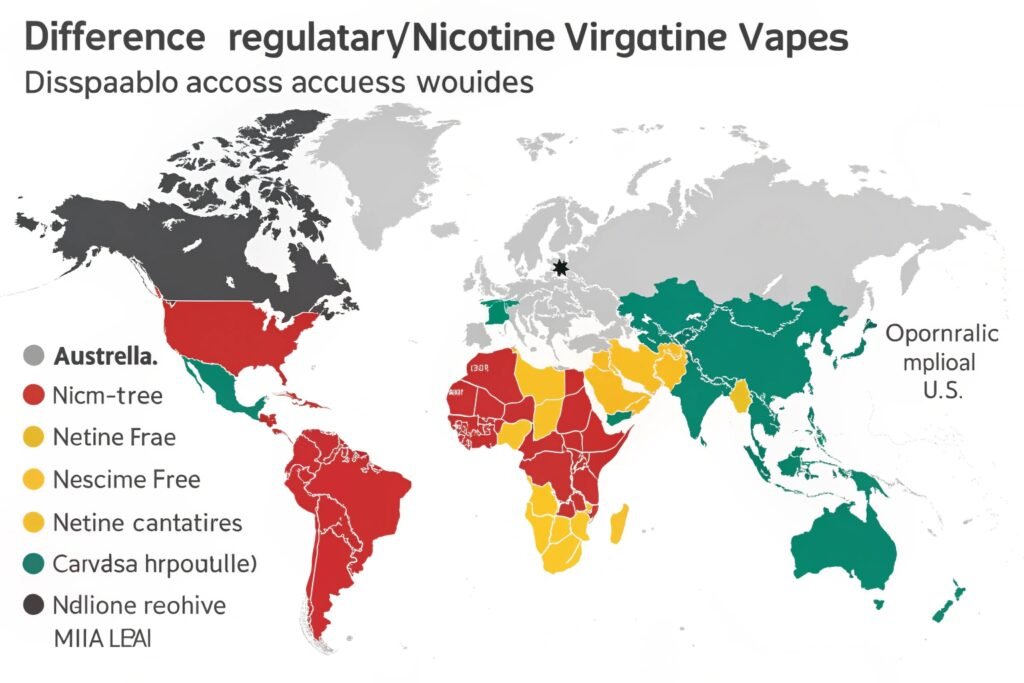 "Legal status of zero-nicotine vapes in different regions"
"Legal status of zero-nicotine vapes in different regions"
The regulatory environment for nicotine-free vaping products varies dramatically between jurisdictions, creating a complex landscape that continues to evolve. From my observations monitoring these developments, several important patterns emerge regarding how different regions approach these products.
In the United States, nicotine-free disposables technically fall outside FDA tobacco product regulations that specifically target nicotine-containing items. However, most states and municipalities have implemented parallel regulations that restrict all vaping products regardless of nicotine content to purchasers 21 and older. These age restrictions reflect broader policy approaches to vaping products rather than specific concerns about zero-nicotine formulations. Additionally, some flavor restrictions implemented at local levels apply equally to nicotine and nicotine-free products, particularly in jurisdictions like San Francisco that have implemented comprehensive flavor bans.
The United Kingdom offers perhaps the most developed regulatory framework specifically addressing nicotine-free vaping products. Under UK regulations, zero-nicotine products avoid some of the specific restrictions applied to nicotine-containing alternatives, including maximum tank size limitations and certain warning label requirements. However, they remain subject to general product safety regulations and age restrictions (18+) identical to their nicotine-containing counterparts. This approach effectively creates a partially distinct regulatory category recognizing their different risk profile while maintaining core youth access protections.
Canada has implemented a similar approach through provincial regulations that maintain age restrictions on all vaping products regardless of nicotine content while applying specific additional requirements only to nicotine-containing items. This framework recognizes the reduced risk profile of nicotine-free alternatives while acknowledging that age restrictions remain appropriate regardless of nicotine content. The provincial variances in specific regulations create some complexity for national retailers, though all provinces maintain consistent age restrictions across both product categories.
Australia represents a particularly restrictive environment where all vaping products face significant limitations regardless of nicotine content. Recent regulatory changes have implemented prescription requirements for nicotine-containing products while maintaining strict restrictions on marketing, display, and sale of all vaping products including zero-nicotine disposables. This approach effectively treats both categories with similar regulatory frameworks despite their different risk profiles.
The European Union generally allows greater flexibility for nicotine-free products under the Tobacco Products Directive, which specifically targets nicotine-containing items with restrictions on tank sizes, nicotine concentration, and marketing limitations. Zero-nicotine alternatives typically avoid these specific limitations while remaining subject to general product safety regulations and consistent age restrictions across member states (typically 18+).
Travel considerations represent another important regulatory dimension for users of nicotine-free disposables. While these products generally face fewer import restrictions than nicotine-containing alternatives, many countries maintain quantity limitations or require them to comply with specific product standards regardless of nicotine content. Researching destination-specific regulations remains important even for zero-nicotine users, particularly when traveling to jurisdictions with comprehensive vaping restrictions like Singapore, Thailand, or Japan.
From an enforcement perspective, nicotine-free products sometimes create verification challenges for regulatory authorities. Without obvious visual distinctions between nicotine and nicotine-free versions of identical products, enforcement sometimes relies on packaging inspection or even laboratory testing to confirm compliance with specific nicotine-related regulations. This enforcement complexity has led some jurisdictions to implement identical restrictions across all vaping products regardless of nicotine content, simplifying compliance verification despite different risk profiles.
For retailers, the complexity of maintaining compliance across both product categories has led many to implement uniform policies regardless of nicotine content. This approach typically includes consistent age verification procedures, identical marketing restrictions, and similar display limitations across all vaping products. While potentially more restrictive than strictly required for zero-nicotine products in some jurisdictions, this standardized approach reduces compliance risks in an evolving regulatory environment.
Conclusion
Finding quality nicotine-free disposable vapes requires knowing where to look and which brands have invested in proper zero-nicotine formulations. The market now offers excellent options through specialized online retailers and select physical vape shops, with leading brands including BLVK Crystal Zero, Hyde Color 0mg, and Dinner Lady Zero. While eliminating nicotine removes its specific health concerns and addictive properties, users should still consider the broader safety implications of inhaling heated substances beyond clean air.
My Role
I've spent years developing and manufacturing vaping products, giving me unique insight into how nicotine-free options differ from standard formulations. My background in e-liquid formulation has shown me exactly how manufacturers compensate for nicotine's absence in quality products versus those merely removing it without proper reformulation. This hands-on experience has allowed me to identify truly exceptional nicotine-free options versus those that deliver disappointing experiences.
When customers like Tommy approach me about bulk nicotine-free orders for their distribution channels, I understand their concerns about product consistency, regulatory compliance across different markets, and maintaining customer satisfaction without nicotine's familiar effects. His extensive experience in product design makes him particularly attentive to how well these products maintain satisfaction through proper engineering rather than simply removing nicotine from existing formulations.
-
Explore this link to understand the advantages and growing popularity of nicotine-free disposables in the vaping market. ↩
-
Discover how diverse flavor profiles attract vapers and enhance their experience, making vaping more enjoyable without nicotine. ↩
-
Learn about zero-nicotine formulations to make informed choices and understand their benefits compared to traditional nicotine products. ↩
-
Understanding age verification processes is crucial for ensuring the authenticity and safety of nicotine-free products you purchase. ↩

